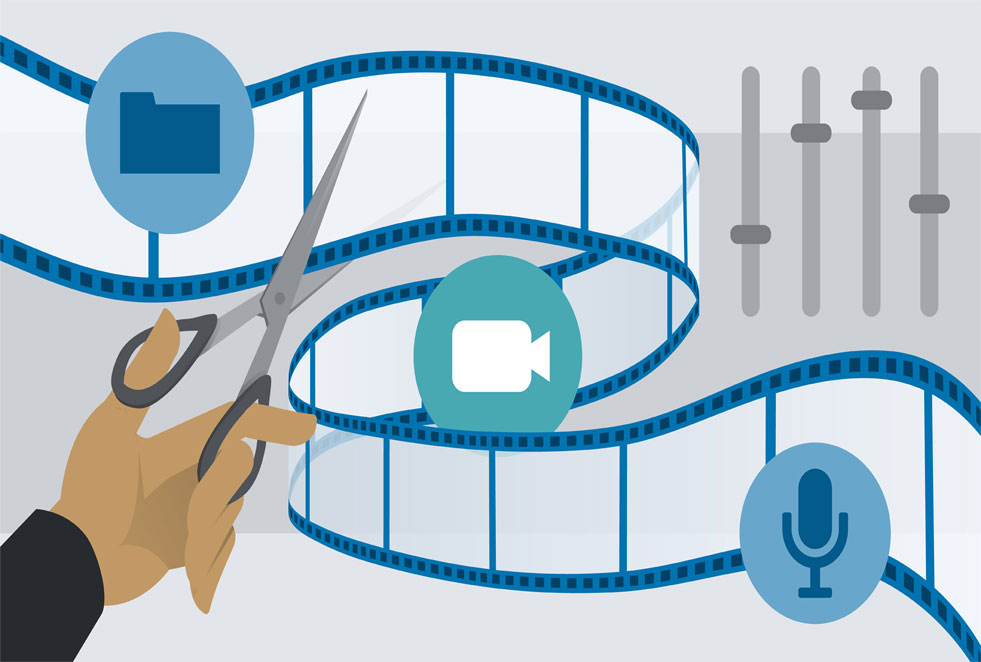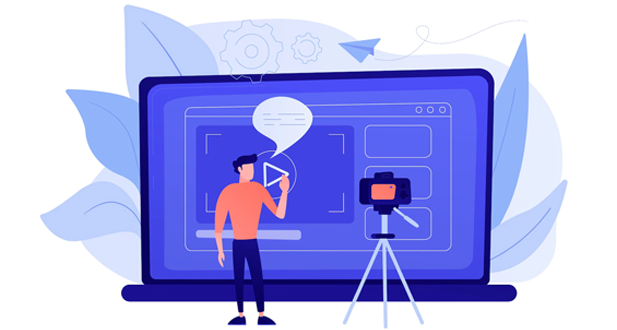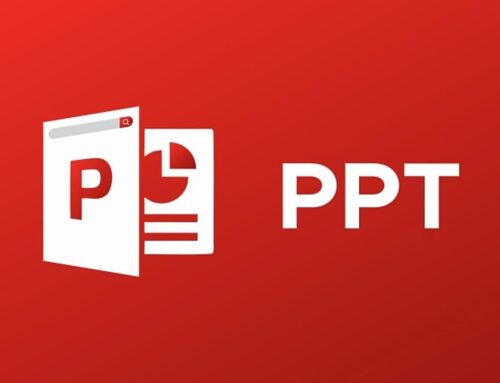Video Editing
The act of modifying a video by moving around different shots and situations to produce an entirely new product is known as video editing. It can be as simple as combining various scenes and shots with straightforward video transitions, or it can be as complex as adding various computer-generated imagery (CGI), audio, and connecting various elements, which may take years, tens of thousands of man-hours, and millions of dollars to complete, as is the case with high-budget motion pictures.
Post-production takes up the most, if not the entire, time of the video editor. The majority of their expertise is concentrated in this area. To understand how to work on a project, it is important to become familiar with a few basic phrases in the video, audio, and color categories. It is also helpful for the video editor to be knowledgeable about visual effects and motion graphics. You should be familiar with a few post-production terminologies. Here are some of the most crucial examples from each category:
Video terminology
- Frame rates – The number of still pictures or frames that are taken each second to produce motion is known as the frame rate. Shooting your video at 24 fps (frames per second) will give it a movie-like appearance. Shooting at a rate higher than 60 fps results in a smoother, more accurate image for slow-motion footage.
- Video resolution – The video resolution, which is measured by the number of pixels in each frame, dictates how many details there are in your movie. There are several popular video resolutions, including 720p (1280 x 720p), 1080p (1920 x 1080p), 2K (2560 x 1440p), 4K (3840 x 2160p), and 8K. (7680 x 4320 pixels).
- Aspect Ratio: The aspect ratio refers to how an image or screen’s width and height are related. Aspect ratios like 4:3, 16:9, and 2:35:1 are frequently used.
- Video codecs – Simply compress a large video file for storage or transmission before decompressing it for playing or editing. H.264, MPEG, and ProRes are a few examples of common video codecs.
- File formats – The container and the codec used to create it are referred to as file formats, also known as video formats. While the codec organizes data, the container acts as the “wrapper” that encapsulates audio and video data in a single file (with extensions like.mov,.avi, or.mp3).
- Safe Zone –Make sure your titles and actions fit nicely in the safe zones if your film will likely be seen on a consumer television rather than a computer or mobile device (title safe and action safe areas).
- Mono vs. Stereo – When comparing mono with stereo, mono is single-position audio coming from a single source (single-channel recording). Two distinct channels that are routed to separate left and right output channels and speakers make up the stereo.
- Audio Levels –Decibels are typically used to measure audio levels (abbreviated dB). The maximum decibel (dB) value is 0, and quieter levels register as negative numbers like -10 dB.
- Sample Rates and Bit Depth – The number of audio samples taken each second, the overall resolution, and the dynamic range are all determined by sample rates and bit depth. 48 kHz is the typical sample rate for video, while 24 bit is the norm for production and mixdown settings.
Color terminology
- White balance – How warm or cool the colors seem in your image depends on the white balance (basically when white is not white).
- Color grading – The process of changing an image’s color characteristics is called “color grading.” It features saturation, color overlays, white balance, contrast, sharpness, and blankness depth.
- Color correction- It is the process of correcting color problems and enhancing the naturalness of a video (basically repairing the original color to make it look clean and real).
- LUTs – “Look Up Tables,” are artistic or predetermined changes made to your footage. LUTs are camera-specific or come from software.
- Waveforms and Vectorscopes -These devices allow for the precise display of color and brightness data. Waveform and vectorscope monitors will enable you to produce a consistent, high-quality video product across devices because you cannot evaluate a video’s quality just on how it appears on a single screen.
Video editing specific terminology
The previous terminology was technical elements of what a video editor has to understand. Understanding those phrases will enable you to explore the features of video editing, including:
- Montages – A montage is a collection of images that have been put together to represent a concept. The ideal video editor strives to increase the amount of visual information while using less screen real estate and maintaining an audience-accessible information flow.
- Transitions- Video transitions are a way to link one shot to the next after the video has been made. The most common transitions are cuts, dissolves, and fades. A cut is a quick change from one shot to the next. A dissolve is when two clips overlap for a few frames (fade-out or fade-in, mainly used to show the passage of time). Even though video editing software has a lot of transitions, you will almost always use the cut. Use transitions to your advantage because they can sometimes add to the style of the production.
- Visual Effects- Visual effects, also known as VFX, are a way to make a scene stand out by filling in gaps or getting rid of unnecessary parts. By putting together live-action videos and making pictures, you can make environments that look real but are impossible to photograph. Visual effects include things like CGI explosions and the movement of a spaceship.
- Motion Graphics – Motion graphics are animated visual elements that are purposefully moved across the screen. Stylized clips, animated lower-third text, intricate title sequences, and even 3D compositions can all be created and animated by a video editor. Amazing motion graphics animations may be made using animation software like Adobe After Effects.
These are the few terminologies we should be aware of.
Video Editing Functions
The majority of finished video recordings have undergone some sort of editing. Similar to raw photography, raw video usually requires some sort of editing, be it simple color correction and cropping or more complex processing involving many camera angles and takes. Typical video editing tasks include:
- Color rectification
- Exposure correction
- Blurring
- Picture cropping
- Trimming
- Re-sequencing
- Crossing over
- Cut-aways
- Fading in and out
Benefits of Video Editing Software for Marketing in Business
The internet is becoming more and more commonplace as the world experiences a digital revolution. One of the industries that have experienced unexpected changes as technology has increasingly moved the market towards online platforms is marketing.
The following are some benefits of using video and a video editor for small business marketing.
- Cost-effectiveness of video editors
Due to the significant costs, a small business cannot employ video marketing in the same manner that a huge corporation does.
An expert video editor can cost a small business a significant portion of its capital, but a major corporation can afford to pay them. Like this website, which offers software solutions for any demands and budget, good video editing software can save you both time and money.
There are several free apps out there, or you may pay a little membership price to receive a capable tool that is just as useful as a pro editor.
- Quick video modifying
Whether you upload your film to YouTube or a social networking site, there is a chance it may be successful. The worst-case scenario is if the video doesn’t provide any leads or the desired results. The idea of video marketing appears frightening given the amount of time and effort needed to develop a video. This is where video editing software can help, as it can speed up the production of movies and so save a lot of time and effort.
In this way, you may regularly release promotional videos to test what kinds of material your audience responds to the best.
- Video Editors Boost productivity
Using specialized video editing software can increase your productivity greatly in addition to saving money and time. You can utilize the time, money, and effort saved by choosing this straightforward alternative elsewhere.
- Quickly Produce Appealing Videos
Although content is regarded as the king of SEO, video marketing is what initially grabs a customer’s attention. No one reads a blog’s deluge of information, regardless of how helpful it is. On the other hand, an engaging video might tempt the visitor to read the content, increasing your chances of snagging a lead.
With the use of effective editing software, you can quickly create a captivating video that will increase website visitor interaction.
- Complete Your Projects Remotely
A resource limitation when you first start out is inevitable. However, the best thing about good video editing software is that it enables remote work. You can quickly assemble all the components required to produce a film that looks professional with the application.
Slideshows are a good place to start, and after a few days, you can go on to making movies that appear expensive.
- Get the Complete Video Editing Experience
While extra plug-ins may be helpful in the majority of circumstances, they can also make video editing more difficult, which a tiny business cannot afford. However, using a top-notch video editing tool does away with the requirement for any plug-ins.
The procedure can be streamlined by using an advanced video editor to add eye-catching graphics and transitions.
- Follow-through on Professional Creation Standards
A poorly written piece of material on your website is enough to turn visitors away, but a poor video can make them less likely to come back. A video’s shelf life will decrease when it is posted to a social media platform, but a video that was poorly made in the first place will undo all of your work.
Thus, adopting a powerful video editing program is ideal for small business marketing.
- Allows for Custom Video Creation
Even if you use a quality video editing tool and carefully outline your requirements, the finished product probably won’t have anything special about it. Video editing software makes it possible for everyone to tailor their content to their tastes.
You can add your own touches to the movies to make sure they represent the principles of your business. You can also add narration or background music to the videos. It lets you narrate the content in the way of your choice and target a certain market segment.
Importance of Video Editing
When you edit a video, all of your work comes together and you get to put the pieces together. Your video will be, at best, unimpressive without a great editor. An excellent editor makes your graphics and message come to life in a manner that the average person cannot.
Many people concentrate on the message, the script, the production, and the visuals when making a video. Although these factors are certainly highly significant, it’s simple to undervalue the value of having your work edited by a professional who is knowledgeable in this field. Editing is arguably the most difficult skill to master out of all the different abilities and knowledge bases required for video production. Being a competent video editor requires countless hours of practice, patience, and trial and error, which is what makes it such a challenging skill to perfect. Even the best Hollywood video editors still see themselves as students.
Over the past few years, video editing software has advanced significantly, and there are now numerous online training resources. Even when using the most user-friendly video software, people rarely realize that the process is more complex than they initially think. Gaining proficiency in widely used software takes a very long time (and that’s assuming you have a decent mentor).
You must invest in pre-planning (i.e., the video needs to be planned from beginning to end) before any filming begins if you want to guarantee the best edit. The planning process can be very time consuming, but without it, the final edit will never be effective or successful.
Video Editing Skills
Whatever the field or position, being able to edit movies well requires a variety of talents, including:
1. Observation of details- Your capacity for thorough and accurate work completion through concentration and precision is known as attention to detail. As a video editor, you must be able to appraise both the smaller details of your work and the larger overall project.
2. Adaptability- The ability to swiftly and readily shift your strategy and attitude in response to environmental changes is known as adaptability. Since production delays are a common unforeseen problem in this market, video editors must maintain their flexibility to succeed.
3. Self-motivation- Self-motivation is a crucial component of the video editing skill set because you frequently work alone and hold yourself accountable when editing videos. Self-motivation is the urge to work effectively that comes from the inside. Self-motivated people rarely need supervision to make sure they are carrying out their obligations.
4. Organizational skills- Being well-organized is essential to video editing since it enables you to structure different clips into a seamless whole.
5. Communication skills- You can efficiently receive and relay a range of information if you can communicate. For video editors, this ability is especially crucial because they frequently collaborate with a variety of experts, such as:
- Music creator
- Editors for special effects
- Sound producers
- Cinematographers
- Directors
- Aptitude for solving issues
6. Problem-solving skill- Itis the capacity to analyze a situation and create a workable solution. Because you have to work with the footage you are provided to produce a thorough and coherent tale, this skill is essential for video editing.
7. Familiarity with editing software programs- You need a number of editing tools, like these, in addition to film production expertise in order to edit videos.
- Adobe Premiere Pro
- Apple Final Cut Pro
- Avid Media Composer
- DaVinci Resolve
- Vegas Sony
- Autodesk Smoke
- Lightworks
How to improve Video Editing skills
You can follow these easy methods to improve your video editing abilities:
- Finance your education- Constant learning is one of the best methods to improve your video editing abilities. Utilize training and educational opportunities, read up on cutting-edge methods, and become quite familiar with a range of video editing tools.
- Invest in a suitable computer- Your ability to edit videos effectively can be greatly influenced by your choice of machine. Select a computer that suits your needs, but make sure it is quick and well-suited for video editing. You should also think about purchasing a quick storage drive, more RAM, graphics cards compatible with your video editing program, and a quicker processor.
- Make use of keyboard shortcuts- You can become a more proficient and successful video editor by learning keyboard shortcuts. To master the different shortcuts and take advantage of this time-saving technique, you can locate and print off a cheat sheet designed especially for the program you use.
Video Editing Services
We provide expert video editing services to organizations in a variety of industries at EchoPx Technologies. We can develop the appropriate outputs to fit your needs if you require digital video editing services for business presentations, sales marketing, or any other function. We have a good track record in the business because of our experience and commitment to completing projects successfully. You can advertise your items and have the desired influence on your audience by working with us.
Thus, when you avail high-definition video editing services from us, you can confidently market your products and services.
List of Video Post-Production Services at EchoPx Technologies
As the leading video editing company, we offer comprehensive solutions that address a wide range of client project requirements. Individual clients, established enterprises, startups, and real estate agencies can use our services to improve their video marketing campaigns with custom visuals adapted to their needs.
At EchoPx Technologies, you will find the required technology and professional video editors who are capable of transforming raw footage into enhanced visuals within a short turnaround time.
Advantages of choosing us for your Video Editing Outsourcing Projects
At EchoPx Technologies, we provide a complete solution for your video enhancement requirements. Whether you need assistance refining or want to develop full-length commercials, you can reach out to us. Our experts also specialize in the editing of birthday videos, family videos, , videos, vlog videos etc.
Our High-Definition Video Editing include
- Explainer videos
- Educational videos
- Events
- Corporate videos
- Client testimonials
- YouTube videos
Apart from the above, clients can also come to us for professional animated video editing, storyboarding,, feature , developing visual summaries, business video editing, composing, and much more.
Our creators have a lot of experience in the business and know how to use modern editing software to get the project done. Furthermore, when you outsource these needs to a competent firm like ours, you can be certain in the edited video quality outputs you will receive. You will have more time to focus on other aspects of the business that are more important or need immediate attention.
At EchoPx Technologies, we can come up with new ideas, perspectives, or styles to address the exact need of your projects, thereby contributing to the production of high-definition videos. Regardless of the complexity of your project, we always aim to make you happy.
Our video editors are experts in all aspects of graphic designing and can help you meet your marketing requirements.







